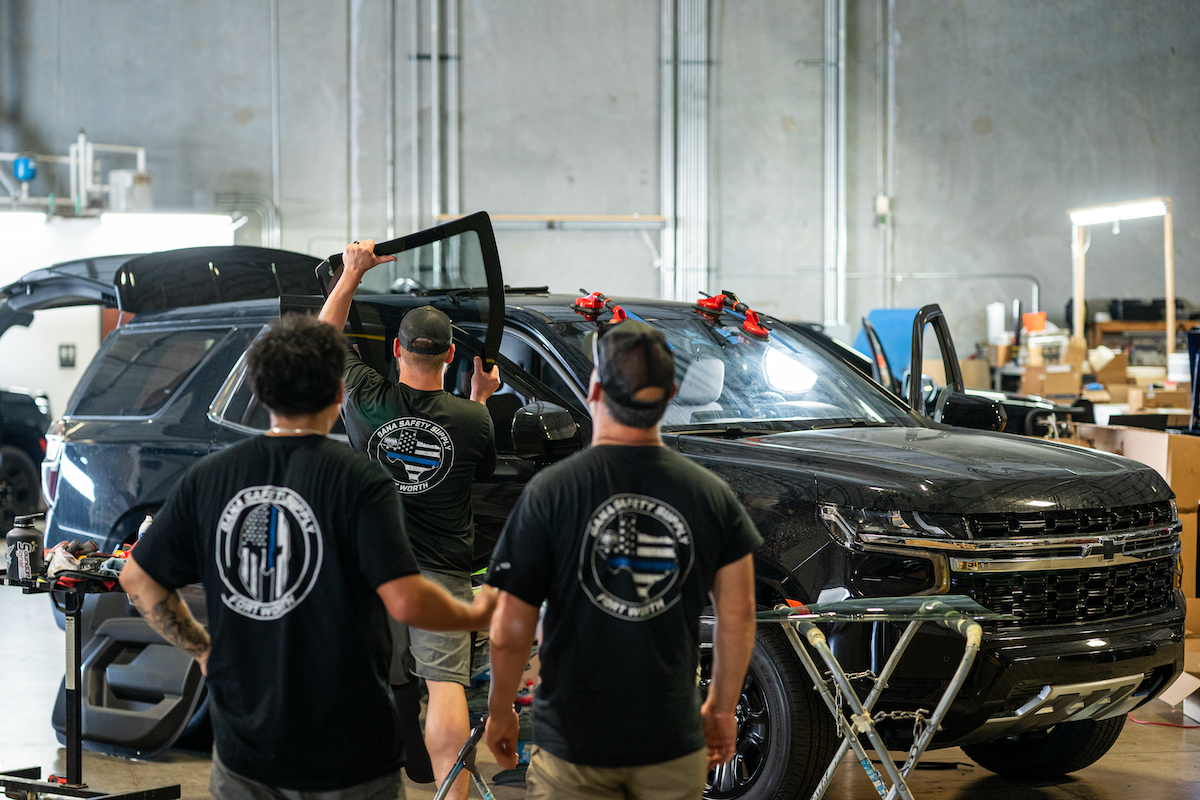Have you ever heard of Stop Sticks? They might sound like an unusual tool, but trust me, they're critical in the world of law enforcement. These little devices pack a powerful punch in controlling traffic, especially during high-speed pursuits.
They’ve proven their worth time and again in ensuring public safety, making our roads a tad bit safer. But what exactly are they, and how do they work?
Let’s delve deeper into the world of Stop Sticks.
What are Stop Sticks?
You might be wondering, what on earth are Stop Sticks? Picture a device that, once deployed, can bring a high-speed police chase to a safe and controlled end. Sounds a bit like an action movie, right? That's the beauty of Stop Sticks.
In essence, they are tire-deflation devices utilized by law enforcement agencies worldwide to safely decelerate and eventually halt vehicles during dangerous, high-speed pursuits. They are compact, portable, and can be rapidly deployed, providing law enforcement with a unique advantage in traffic control scenarios.
The History of Stop Sticks
Fancy a quick trip down memory lane? The origins of Stop Sticks can be traced back to the 1990s. This was a time when police pursuits, though exciting on screen, presented serious dangers in real life. As high-speed chases continued to pose significant risks to the public, the police, and even the suspects involved, there was a need for a safer solution.
Enter Stop Sticks. Their invention brought about a seismic shift in how police handle high-speed chase situations, reducing risk and ensuring better outcomes.
How Stop Sticks Work
Let’s look at how these devices work. Imagine a bed of nails, but with a friendly twist. Instead of causing injury, these 'nails' – which are actually hollow spikes – are designed to slowly and safely deflate a vehicle's tires. When a vehicle runs over Stop Sticks, the spikes puncture the tires, causing a gradual release of air. This controlled deflation helps to bring the vehicle to a smooth and safe stop in most cases..
Benefits of Using Stop Sticks
What makes Stop Sticks so advantageous? Think of a game of tag. Wouldn't it be great if you could just "pause" the other person, giving you a strategic advantage? That's exactly what Stop Sticks offer law enforcement. They provide an effective, non-lethal, and cost-efficient means of bringing high-speed chases to an end. Their ease of deployment and the controlled manner in which they stop vehicles make them safer for everyone involved, from the officers and the fleeing suspect to innocent bystanders and other road users.
Application in Law Enforcement

Let's paint a scene. You've got a car chase, adrenaline pumping through your veins, a suspect determined to evade capture at all costs. This is the perfect stage for Stop Sticks. They're designed for these high-octane, high-risk situations, allowing law enforcement to effectively and safely bring the pursuit to a halt. They reduce the risks associated with these chases, safeguarding officers, suspects, and the general public.
Case Studies of Stop Sticks in Use
To illustrate their effectiveness, let's take a look at a real-world example. In 2019, law enforcement in Oregon successfully used Stop Sticks to bring a dangerous high-speed pursuit to an end. The suspect's vehicle was fitted with large, rugged tires, but even these were no match for the Stop Sticks. The vehicle's tires deflated slowly after running over the devices, allowing the driver to maintain control as the vehicle slowed down, finally coming to a stop without crashing or causing harm to anyone involved. This successful deployment of Stop Sticks demonstrated their practical effectiveness in action, highlighting their crucial role in ensuring the safety of both law enforcement officers and the general public.
Training and Best Practices for Stop Sticks
Stop Sticks may be a powerful tool, but proper training and adherence to best practices are essential for their effective and safe utilization. Law enforcement agencies provide comprehensive training programs to their officers, equipping them with the necessary knowledge and skills to handle high-speed pursuits and deploy Stop Sticks with precision. Officers learn the correct positioning of the devices, the ideal timing for deployment, and the importance of communication and coordination during a chase. Training also emphasizes the importance of situational awareness and evaluating the risks and potential consequences before deploying Stop Sticks.
Additionally, regular practice sessions are conducted to enhance officers' proficiency in using Stop Sticks. This ensures that they can swiftly and accurately deploy the devices in real-world scenarios, where split-second decision-making is crucial. By following established protocols and keeping their skills sharp through training, law enforcement officers maximize the effectiveness of Stop Sticks and minimize any potential risks associated with their use.
Controversies and Concerns
Like any tool used in law enforcement, Stop Sticks are not without their share of controversies and concerns. Critics argue that the deployment of Stop Sticks can escalate a situation and potentially endanger innocent bystanders or other motorists on the road. There have been instances where suspects lost control of their vehicles after their tires deflated, resulting in accidents. However, it's important to note that these incidents are relatively rare, and the benefits of using Stop Sticks outweigh the risks when employed correctly.
To address these concerns, law enforcement agencies continuously evaluate and refine their policies and procedures regarding the use of Stop Sticks. They aim to strike a balance between ensuring public safety and apprehending suspects involved in high-speed pursuits. Training programs and guidelines are regularly updated to enhance officers' ability to make informed decisions when deploying Stop Sticks, considering factors such as the speed of the pursuit, road conditions, and the presence of pedestrians or other vehicles.
Alternatives to Stop Sticks
While Stop Sticks are an effective tool for tire deflation and traffic control, they are not the only option available to law enforcement agencies. Alternatives such as spike strips, roadblocks, and pursuit intervention techniques (PIT maneuvers) are also utilized, depending on the specific circumstances of each situation. Spike strips, similar to Stop Sticks, puncture tires to deflate them, but they are typically placed across the road and require careful positioning. Roadblocks involve creating physical barriers to halt the pursued vehicle, while PIT maneuvers involve intentional vehicle contact to disable the suspect's car.
Each alternative has its advantages and considerations. Law enforcement agencies assess the situation at hand, considering factors like road conditions, the type of vehicle being pursued, and the level of risk to determine the most appropriate method for stopping the fleeing vehicle. Stop Sticks, with their controlled deflation and safer stopping mechanism, are often favored due to their effectiveness and lower risk of causing accidents.
The Future of Stop Sticks

As technology continues to evolve, so do the tools used in law enforcement. Stop Sticks are no exception. Efforts are underway to enhance their design, making them more efficient, durable, and versatile. Researchers and engineers are exploring advanced materials that improve puncture capabilities while minimizing damage to tires. Moreover, innovations in remote-controlled deployment mechanisms are being explored, enabling law enforcement officers to deploy Stop Sticks more safely from a distance, reducing the risk of being in close proximity to a high-speed pursuit.
The continuous development and improvement of Stop Sticks ensure that law enforcement agencies have access to the most effective and cutting-edge tools for traffic control and public safety. These advancements underscore the commitment to keeping pace with the ever-evolving nature of law enforcement and the constant pursuit of safer methods to apprehend suspects involved in high-speed chases.
Stop Sticks and Community Safety
One of the primary goals of law enforcement agencies is to ensure the safety and well-being of the communities they serve. Stop Sticks play a vital role in achieving this objective by helping to bring dangerous situations under control swiftly and safely. By effectively deflating tires and slowing down vehicles involved in high-speed pursuits, Stop Sticks mitigate the risks posed by reckless drivers, reducing the chances of accidents, injuries, and fatalities.
When community members witness law enforcement utilizing tools like Stop Sticks, it reinforces their trust in the ability of law enforcement agencies to protect and serve. The presence of effective traffic control measures fosters a sense of security and confidence among residents, knowing that measures are in place to address potential threats on the road. Ultimately, Stop Sticks contribute to building stronger relationships between law enforcement and the communities they serve, creating safer environments for everyone.
How to Support Law Enforcement Use of Stop Sticks
If you believe in the importance of tools like Stop Sticks in enhancing public safety and supporting law enforcement efforts, there are ways you can actively show your support. Here are a few suggestions:
- Stay informed: Educate yourself about the role of Stop Sticks and other traffic control measures in law enforcement. Stay updated on advancements in this field and the impact they have on community safety.
- Advocate for training and resources: Encourage local authorities to prioritize training programs for law enforcement officers on the proper use of Stop Sticks. Advocate for the allocation of resources necessary to equip police departments with these essential tools.
- Spread awareness: Share information about Stop Sticks and their benefits with your community. Use social media platforms or community forums to raise awareness about the significance of traffic control measures in enhancing public safety.
- Engage in community discussions: Participate in discussions and dialogues regarding community safety and law enforcement practices. Offer constructive input and support the implementation of effective traffic control strategies that prioritize public safety.
- Cooperate with law enforcement: Observe and comply with traffic laws and regulations to ensure a safe environment for all road users. Report any suspicious or dangerous activities promptly to local law enforcement agencies to assist in maintaining community safety.
By actively supporting law enforcement's use of Stop Sticks and promoting community safety, you contribute to the overall well-being of your community and help create a safer environment for everyone.
Conclusion
Stop Sticks have emerged as a critical tool for law enforcement traffic control, providing a safer and more effective means of stopping high-speed pursuits. Through controlled deflation of tires, these devices help bring dangerous situations under control, protecting both law enforcement officers and the general public. Despite some concerns and controversies surrounding their use, proper training, adherence to best practices, and ongoing improvements ensure their continued effectiveness in the field.
As technology advances, Stop Sticks will evolve further, incorporating innovative features that enhance their performance and safety. Their role in community safety cannot be overstated, as they contribute to maintaining order on the roads and fostering trust between law enforcement and the communities they serve.
FAQs About Stop Sticks
Are Stop Sticks safe to use?
Stop Sticks are designed with safety in mind. Their controlled deflation mechanism minimizes the risk of accidents during high-speed pursuits. Proper training and adherence to guidelines are crucial to ensuring their safe and effective usage.
Do Stop Sticks damage tires?
Stop Sticks are designed to puncture tires gradually, minimizing damage while safely deflating them. However, it's important to note that tire replacement is typically required after their use.
Can Stop Sticks be used on all types of vehicles?
Stop Sticks are effective on most vehicles, including cars, trucks, and motorcycles. However, their success may vary depending on tire type, size, and speed.
Do law enforcement officers require specialized training to use Stop Sticks?
Yes, officers undergo specific training to learn proper deployment techniques and safety protocols associated with Stop Sticks. Regular practice sessions ensure proficiency in using this critical tool.
Are there legal implications of using Stop Sticks?
The use of Stop Sticks is subject to the laws and regulations of each jurisdiction. Law enforcement agencies follow established protocols to ensure compliance with legal requirements when utilizing Stop Sticks during pursuits.






